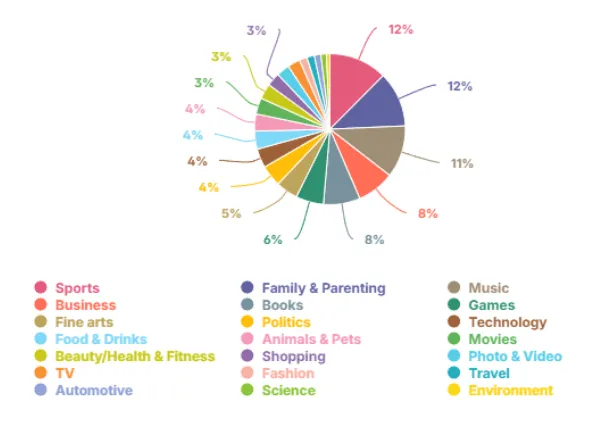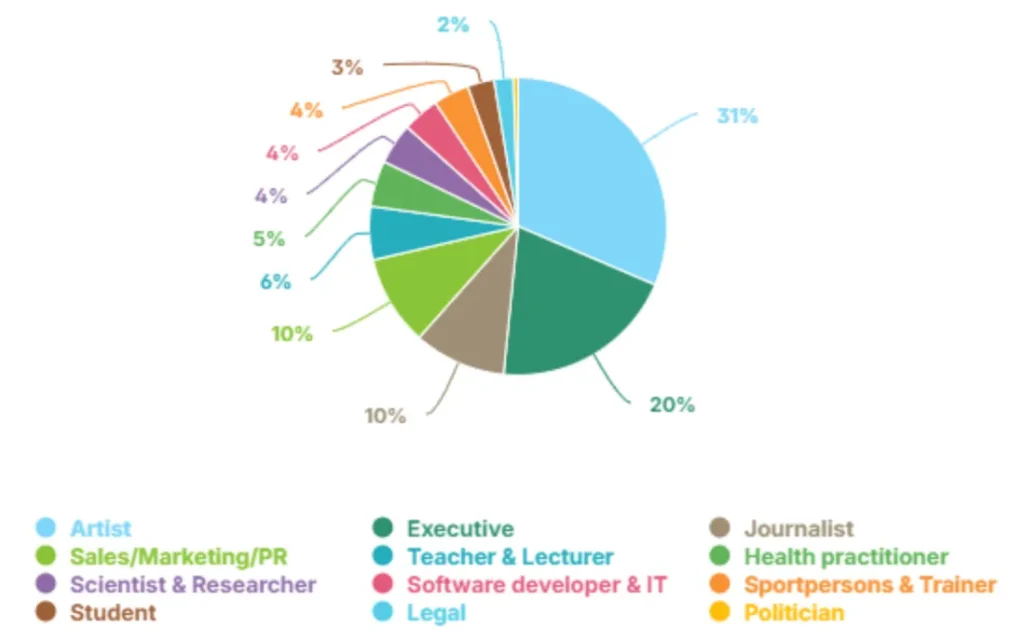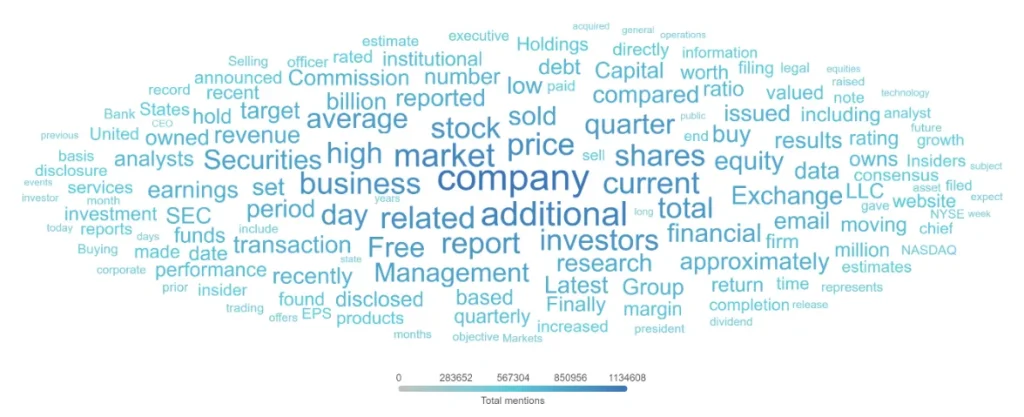Black Friday, the highly anticipated shopping event held annually the day after Thanksgiving in the United States, has evolved into a significant barometer of consumer behavior and retail trends.
As we approach Black Friday 2024, it’s essential to analyze how this year’s event compares to previous years, particularly 2023, and to understand the changing landscape of consumer preferences and spending patterns.
This article delves into the highlights of Black Friday 2024, examining key brands, products, and trends while providing actionable insights for brands to maximize their impact.
Black Friday Overview and Historical Context
Black Friday, originally coined to mark the beginning of the holiday shopping season, has evolved from a single-day event into a prolonged shopping frenzy that extends through the weekend and often into Cyber Monday.
According to the National Retail Federation (NRF), Black Friday 2023 generated approximately $9.2 billion in online sales alone, a significant increase from the $8.9 billion recorded in 2022.
In 2024, Black Friday is expected to continue this growth trajectory. The NRF projects that total spending across all channels could exceed $10 billion, driven by increasing consumer confidence and improved economic conditions.

Source: Brandwatch
*The chart illustrates the Date Range Comparison. The analysis includes English mentions from January to August, 2024.
Key Trends and Highlights for Black Friday 2024
Increased Online Shopping:
The trend toward online shopping, accelerated by the COVID-19 pandemic, shows no sign of waning. In 2024, digital sales are anticipated to dominate, with a significant portion of transactions occurring on mobile devices.
According to Adobe Analytics, online sales during Black Friday 2023 increased by 11% compared to 2022, and a similar rise is expected this year.
Rise of AI and Personalization:
Retailers are leveraging artificial intelligence (AI) and machine learning to enhance personalization and optimize shopping experiences. AI-driven tools help brands understand consumer behavior, predict trends, and tailor promotions to individual preferences.
This technology is expected to play a crucial role in shaping the success of Black Friday campaigns in 2024.
Sustainability and Ethical Shopping:
Consumers are increasingly prioritizing sustainability and ethical practices when making purchasing decisions. Brands that emphasize eco-friendly products and transparent supply chains are likely to attract more attention this Black Friday.
Research by Nielsen indicates that 66% of global consumers are willing to pay more for sustainable brands, a trend that is expected to influence Black Friday 2024.
Emergence of New Retail Channels:
Social commerce and live shopping events are gaining popularity, offering brands new avenues to engage with consumers.
Platforms like Instagram and TikTok are becoming crucial for driving sales, with live shopping events providing real-time interaction and immediate purchasing opportunities.
Political Climate and Consumer Behavior:
The political landscape in the United States in 2024, including the upcoming presidential election, is expected to influence consumer behavior during Black Friday. Economic policies, campaign rhetoric, and social issues highlighted during the election season could impact consumer confidence and spending patterns.
Retailers should be mindful of these factors when planning their marketing strategies, as shifts in sentiment could affect the overall success of Black Friday promotions.


Comparison with Black Friday 2023
Key Brands and Products:
In 2023, major retailers like Amazon, Walmart, and Target dominated the Black Friday landscape, with electronics and home appliances being among the most sought-after products. For 2024, we can expect these brands to maintain their strong presence, but with an increased focus on exclusive online deals and limited-edition products.
Brand Mentions and Consumer Sentiment:
Analysis of social media mentions from Black Friday 2023 reveals that Amazon, Walmart, and Best Buy were the most talked-about brands. Consumer sentiment was generally positive, with notable mentions of great discounts and fast shipping.
This year, it will be essential for brands to monitor social media closely and engage with consumers to capitalize on emerging trends and address any concerns in real time.
Products in Demand:
In 2023, electronics such as smartwatches, gaming consoles, and home automation devices were top sellers. For 2024, the focus is shifting towards wearable technology, smart home solutions, and sustainable products.
Brands should align their inventory and marketing strategies accordingly to meet evolving consumer preferences.

Source: Brandwatch
*The chart illustrates the Date Range Comparison. The analysis includes English mentions from January to August, 2024 versus mention from January to August, 2023.
Positive Assurance vs. Economic Concerns
The latest data on Black Friday content reveals a mix of positive and neutral sentiment across various media outlets. On August 29, 2024, several news pieces highlighted the U.S. Postal Service’s commitment to ensuring the secure and timely delivery of election mail, reflecting positive sentiment.
This assurance was well-received, as evidenced by the coverage across multiple platforms including Mystery Shopping Teacher, NY Newscast, and VBNG TV. Additionally, other articles provided updates on early Labor Day sales, financial management news, and corporate earnings, all maintaining a neutral tone.
In contrast, data from August 30, 2023, predominantly shows negative and neutral sentiment. Discussions on Tumblr voiced frustration about academic deadlines clashing with Black Friday, revealing a sense of anger and dissatisfaction among students. Furthermore, reports on consumer confidence and rising costs also reflected negative sentiment, highlighting concerns about economic challenges.
This contrast underscores how sentiment around Black Friday and related topics can shift from year to year, influenced by various factors such as economic conditions and societal issues.
Regional Trends, Interests and Professions
The data reveals notable shifts in Black Friday discussions across different regions and interests between 2023 and 2024.
In terms of regional mention volume, California remains the most active state, though there has been a decrease from 10,351 mentions in 2023 to 9,552 in 2024. Texas follows closely, with a decrease from 6,119 mentions in 2023 to 6,536 in 2024. New York also saw a decline from 7,477 to 5,792 mentions.
This decline in mention volume in major states suggests a potential shift in consumer engagement or sentiment towards Black Friday promotions.
Interest analysis shows a significant decrease in discussions related to sports and shopping. Sports-related mentions dropped from 11,522 in 2023 to 8,172 in 2024, while shopping mentions fell from 3,504 to 1,898.
Conversely, family and parenting, and music have maintained high levels of interest, indicating that these topics may be more central to conversations about Black Friday.
Professionally, the profiles of individuals discussing Black Friday have shifted slightly, with artists and executives remaining prominent but other roles like journalists and sales/marketing professionals experiencing noticeable decreases.
This shift in both interest and profession highlights evolving consumer focus and engagement strategies during Black Friday.

Source: Brandwatch
*The chart illustrates the Gender Split. The analysis includes English mentions from January to August, 2024.


Source: Brandwatch
*The chart illustrates the Professions. The analysis includes English mentions from January to August, 2024.
What Brands Need to Know for Black Friday 2024
- Prepare for Increased Competition: With the growing number of retailers participating in Black Friday, brands must differentiate themselves through unique offers, personalized marketing, and exceptional customer service.
- Leverage Data and Analytics: Utilize data analytics to understand consumer behavior, track sales performance, and adjust strategies in real-time. Data-driven insights can help brands make informed decisions and optimize their campaigns.
- Enhance Omnichannel Strategies: Ensure a seamless shopping experience across all channels, including online, mobile, and physical stores. A cohesive omnichannel approach can enhance customer satisfaction and drive higher conversion rates.
- Focus on Customer Experience: Prioritize providing an outstanding customer experience, from user-friendly websites and responsive customer service to efficient delivery and hassle-free returns. A positive shopping experience can lead to increased customer loyalty and repeat business.

Source: Brandwatch
*The chart illustrates the Top Keywords. The analysis includes English mentions from January to August, 2024.
Financial Impact and Expectations for 2024
Annual Spending Trends: Black Friday consistently ranks as one of the highest-grossing retail events of the year. In 2023, total spending across online and in-store channels was estimated at around $16.5 billion. For 2024, projections indicate that spending could surpass $18 billion, reflecting continued growth in consumer expenditure.
Expectations for 2024: As the retail landscape continues to evolve, brands should expect heightened competition, increased consumer expectations, and a greater emphasis on technology and personalization. Adapting to these trends and staying ahead of the curve will be crucial for success in Black Friday 2024.
Black Friday 2024 is shaping up to be a pivotal event in the retail landscape, defined by the convergence of technological advancements, shifting consumer values, and a highly competitive market.
The anticipated growth in online shopping, driven by mobile commerce and AI-powered personalization, underscores the importance of digital strategies. Moreover, the rise of sustainability as a key purchasing factor and the emergence of new retail channels like social commerce signal a changing tide in consumer behavior.
For brands, the stakes are higher than ever. Success in Black Friday 2024 will require a multifaceted approach that goes beyond mere discounts and deals.
Brands must leverage data and analytics to fine-tune their strategies in real-time, ensuring they meet the evolving expectations of consumers. Omnichannel integration, superior customer experiences, and ethical business practices will be crucial differentiators in a crowded market.
Additionally, with the U.S. political landscape in flux due to the 2024 elections, brands need to stay attuned to how national sentiment and economic conditions might influence consumer spending. The interplay between political developments and consumer confidence could create both opportunities and challenges, requiring brands to be agile and responsive.
As we approach this critical shopping period, the brands that will thrive are those that anticipate trends, adapt swiftly, and place the consumer at the heart of their strategies. By embracing innovation and maintaining a strong commitment to customer satisfaction, brands can not only capitalize on Black Friday 2024 but also set the stage for sustained success in the years to come.
Enjoying our content? Sign up for our newsletter and be the first to receive our latest articles. Stay informed on data analytics insights, business intelligence trends, marketing strategies, and the latest advancements in artificial intelligence.


